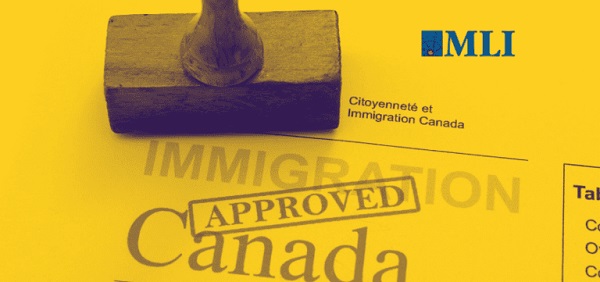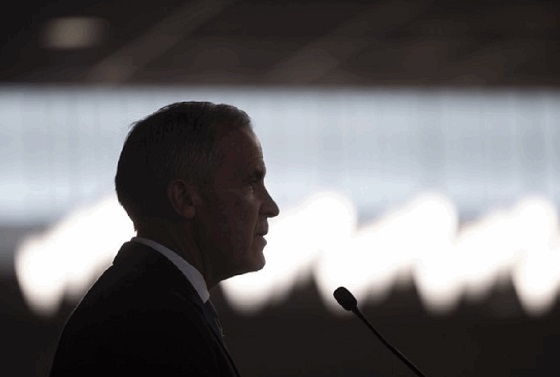Economy
Federal mismanagement to blame for Canada’s immigration backlash

From the Macdonald Laurier Institute
By Sonia Orlu for Inside Policy
Canada’s welcoming attitude towards newcomers makes it one of the most sought-after places to live in the world. However, this image is being tested by a growing backlash against immigration. Immigrants make up 23 per cent of the population, yet economic, social, and cultural anxieties are increasingly challenging the country’s commitment to diversity. More than four-in-ten Canadians now agree – either strongly (23 per cent) or somewhat (21 per cent) – with the statement, “There is too much immigration to Canada.” It is crucial to understand that this backlash is not rooted in opposition to immigration or immigrants themselves, but rather in frustration over mismanagement and inadequate planning by the federal government. It reflects a growing unease about the country’s economic outlook, raising urgent questions about how Canada can uphold its values while addressing legitimate and pressing concerns.
Public reactions and political responses
Canadian political leaders have generally maintained a measured tone on immigration, focusing on economic pressures and service delivery rather than hostility toward immigrants. However, tensions are rising, and a thoughtful debate is increasingly needed.
Prime Minister Justin Trudeau has accused the Conservative Party of spreading misinformation to stoke fears about immigration. Such remarks risk alienating those with legitimate critiques of his administration’s policies and practices. Conservative Leader Pierre Poilievre has linked immigration to housing shortages, criticizing Trudeau’s policies as disconnected from infrastructure needs. This aligns with public frustrations over housing availability and the need for better coordination between immigration levels and capacity. Quebec Premier François Legault echoed similar sentiments, raising issues of resource management and culture. His critics accuse him of xenophobia, but dismissive responses like Immigration Minister Marc Miller’s remark that people are “always blaming immigrants” overlook genuine challenges and deepen frustration.
These exchanges illustrate the delicate balance required in navigating immigration policy and public sentiment. Canadians’ attitudes toward immigration are more nuanced than a simple pro- or anti-immigration divide. Most Canadians aren’t driven by fear or racism; rather, they are focused on how immigration impacts housing affordability, strains public finances, and increases job competition. While apprehension about immigration levels is growing, attitudes toward immigrants themselves remain largely positive. In fact, more than four-in-ten Canadians (42 per cent) say that immigrants make their community a better place, with fewer than one-in-ten (9 per cent) feeling that they make it worse. Still, public concerns must be addressed to prevent further polarization.
The housing crisis: a catalyst for frustration
A significant driver of the immigration backlash is the housing crisis. The Canada Mortgage and Housing Corporation (CMHC) reported in 2024 that Canada needs an additional 3.5 million housing units by 2030 to restore affordability. Cities like Toronto and Vancouver have seen housing prices soar, partly due to increased demand from population growth.
The “housing theory of everything” highlights how housing affects multiple societal issues – such as economic inequality, social mobility, and political polarization. Immigration is no exception. Housing shortages drive up costs, deepen inequality, and create competition between immigrants and long-term residents, eroding social trust and cohesion.
The rise in temporary residents, including international students and temporary foreign workers, compounds these issues. Immigration, Refugees and Citizenship Canada (IRCC) reports that the number of temporary residents increased by over 50 per cent from 2017 to 2022 and continued to rise sharply into 2024. This influx contributes to increased demand in the rental housing market, particularly in urban centres with large universities, driving up prices and reducing availability.
The Trudeau government’s ambitious plan to admit nearly 500,000 new permanent residents annually by 2026 marks one of the highest per-capita immigration rates globally. By comparison, Canada admitted around 200,000 landed immigrants per year in the 1990s and 250,000 per year in the early 2010s. Without matching investments in infrastructure and housing, these elevated immigration levels – often referred to as “mass immigration” – could exacerbate housing shortages, strain public services, and heighten public frustration. Internal documents from Immigration, Refugees, and Citizenship Canada revealed that as early as 2022, officials warned that large increases in immigration could worsen housing affordability and strain public services. Yet, no substantive steps were taken by the government to revise its targets.
Given the realistic timelines for development, it is improbable that infrastructure can keep pace with rapid population growth. The construction industry faces labour shortages, regulatory hurdles, and lengthy timelines for project completion – often several years. The CMHC maintains that due to these complexities, expecting cities to rapidly scale up infrastructure to meet immediate demands is unrealistic.
If these housing issues are not resolved, public frustration could escalate, potentially shifting from concerns about immigration policy to resentment toward immigrants themselves.
Cultural integration: balancing diversity and cohesion
Economic challenges, such as housing affordability, often intersect with social and cultural anxieties. As communities experience rapid change and strained resources, questions arise about society’s ability to integrate newcomers without compromising its social fabric. While only about 4 per cent of Canadians express fears that immigration weakens local culture and identity, concerns about the effectiveness of integration are more widespread. In fact, approximately half of Canadians are concerned that some immigrants may not be adopting Canadian values or fully participating in the broader community. When asked which values immigrants should adopt, Canadians often prioritize language proficiency and respect for the country’s history and culture, highlighting the importance placed on cultural integration. Interestingly, both native-born and foreign-born Canadians largely agree on the values newcomers should embrace, indicating a shared vision for integration.
Canada’s sense of nationhood is deeply tied to its history of migration and its commitment to cultural and ethnic diversity. However, diversity is not inherently beneficial in all forms; its value depends on whether it leads to greater tolerance, creativity, or economic growth. When cultural and ethnic diversity is celebrated without deliberate efforts to foster interaction and promote unity, it risks becoming fragile. Poorly managed diversity can lead to social fragmentation, lower trust, and weakened civic engagement.
The challenges of integration are well-documented. Language barriers, different social norms, and unfamiliarity with Canadian institutions can make it difficult for immigrants to fully integrate. This can sometimes lead to the formation of cultural enclaves, where newcomers find comfort in communities with shared backgrounds but have limited interaction with the broader society. While these enclaves provide crucial support, they can inadvertently hinder full participation in Canadian life. Sociologist Robert Putnam found that, in the short term, diversity can reduce social capital and lower community engagement, particularly when institutions fail to promote integration – a concept he refers to as “hunkering down.” In such cases, both newcomers and long-term residents may feel isolated.
Despite these challenges, diversity, when managed effectively, can yield benefits. Exposure to different cultures fosters creativity, innovation, and economic growth, even though research suggests that immigration itself is neither inherently good nor bad for the economy. Cities like Toronto and Vancouver have thrived in part due to their multicultural populations, which have helped them become global hubs for technology and the arts. Additionally, evidence shows that successful integration is common in Canada. Many immigrants actively embrace Canadian values, contribute to the economy, and participate in civic life. The majority of eligible immigrants become Canadian citizens, demonstrating a strong commitment to their new country. Many immigrants choose Canada precisely because they align with its principles of democracy, equality, and respect for human rights. Cultural integration, in the end, is a dynamic process – one that, when approached thoughtfully, strengthens rather than weakens the social fabric.
Bridging policy failures with sustainable solutions
Addressing public frustrations with immigration requires a serious reassessment of the policies that have exacerbated these concerns.
First and foremost, tackling the housing crisis through integrated planning is essential. Governments should incentivize affordable housing development and reform zoning laws to allow for higher-density projects. Recognizing the realistic timelines for construction and development, planning must begin immediately and be synchronized with immigration targets. Public sentiment strongly supports this approach. A recent Nanos Research survey found that 72 per cent of Canadians want to reduce immigration levels until housing becomes affordable.
Aligning immigration levels with the country’s capacity is crucial. Dynamic targets based on real-time economic data and infrastructure development would ensure that immigration aligns with Canada’s ability to provide services and opportunities. Returning to historical admission levels of 200,000 to 250,000 immigrants per year could help ease pressure on housing and public services. Adjusting the composition of immigration streams is equally important.
Temporary measures – such as pausing or reducing programs for international students and temporary foreign workers – could relieve immediate pressures while infrastructure catches up. For instance, although international students contributed over $30 billion to the economy in 2022, lowering their numbers could help reduce housing demand in university towns. Likewise, managing temporary foreign worker intake would address labour shortages without overwhelming resources.
Effective integration and support services must also be given priority. This should begin with implementing consistent selective immigration measures that evaluate an applicant’s potential to integrate both economically and culturally into Canadian society. Such measures would reduce reliance on extensive post-arrival support and help ease cultural tensions. According to a 2018 Angus Reid survey, two-in-three Canadians believe that greater emphasis should be placed on screening for alignment with Canadian values. However, it’s important to note that defining “Canadian values” can be subjective and risks being perceived as discriminatory.
Improvements to post-arrival services like community centres offering language classes, job search support, and cultural orientation programs are necessary to significantly ease the transition for newcomers. Research shows that when immigrants are effectively integrated, they are more likely to find employment, increasing tax contributions and reducing their reliance on social services. Additionally, well-integrated immigrants are more likely to engage in civic life, fostering social cohesion and strengthening community resilience.
Cultural diversity, while valuable, cannot be assumed to sustain itself without active support. Integration is not just about where people live or demographic representation; it also involves cultivating a shared sense of purpose and belonging. Successful integration depends on a reciprocal relationship: immigrants need the resources and opportunities to succeed, and in turn, they must engage with and contribute to the broader societal and cultural framework. Without deliberate policies that encourage community engagement, cross-cultural dialogue, and mutual respect, there is a risk that cultural diversity will falter.
Finally, responsible political discourse is crucial. Leaders must choose their words carefully, as rhetoric shapes public perceptions. By fostering nuanced and empathetic dialogue, they can bridge the gap between public concerns and policy realities, preserving national unity.
Canada stands at a crossroads. While immigration has long been one of our greatest assets, the current backlash highlights cracks in its management. This is not a rejection of immigrants – it’s a call for better policies and improved management. High immigration levels without careful planning will continue to harm our society. Our leaders now face a choice: fan the flames of division or unite the country around meaningful, evidence-based solutions.
Sonia Orlu is a Ph.D. student in Political Science at Simon Fraser University and a commentator on politics and culture. She is a contributing writer to the Macdonald-Laurier Institute.
Business
Socialism vs. Capitalism

People criticize capitalism. A recent Axios-Generation poll says, “College students prefer socialism to capitalism.”
Why?
Because they believe absurd myths. Like the claim that the Soviet Union “wasn’t real socialism.”
Socialism guru Noam Chomsky tells students that. He says the Soviet Union “was about as remote from socialism as you could imagine.”
Give me a break.
The Soviets made private business illegal.
If that’s not socialism, I’m not sure what is.
“Socialism means abolishing private property and … replacing it with some form of collective ownership,” explains economist Ben Powell. “The Soviet Union had an abundance of that.”
Socialism always fails. Look at Venezuela, the richest country in Latin America about 40 years ago. Now people there face food shortages, poverty, misery and election outcomes the regime ignores.
But Al Jazeera claims Venezuela’s failure has “little to do with socialism, and a lot to do with poor governance … economic policies have failed to adjust to reality.”
“That’s the nature of socialism!” exclaims Powell. “Economic policies fail to adjust to reality. Economic reality evolves every day. Millions of decentralized entrepreneurs and consumers make fine tuning adjustments.”
Political leaders can’t keep up with that.
Still, pundits and politicians tell people, socialism does work — in Scandinavia.
“Mad Money’s Jim Cramer calls Norway “as socialist as they come!”
This too is nonsense.
“Sweden isn’t socialist,” says Powell. “Volvo is a private company. Restaurants, hotels, they’re privately owned.”
Norway, Denmark and Sweden are all free market economies.
Denmark’s former prime minister was so annoyed with economically ignorant Americans like Bernie Sanders calling Scandanavia “socialist,” he came to America to tell Harvard students that his country “is far from a socialist planned economy. Denmark is a market economy.”
Powell says young people “hear the preaching of socialism, about equality, but they don’t look on what it actually delivers: poverty, starvation, early death.”
For thousands of years, the world had almost no wealth creation. Then, some countries tried capitalism. That changed everything.
“In the last 20 years, we’ve seen more humans escape extreme poverty than any other time in human history, and that’s because of markets,” says Powell.
Capitalism makes poor people richer.
Former Rep. Jamaal Bowman (D-N.Y.) calls capitalism “slavery by another name.”
Rep. Alexandria Ocasio-Cortez (D-N.Y.) claims, “No one ever makes a billion dollars. You take a billion dollars.”
That’s another myth.
People think there’s a fixed amount of money. So when someone gets rich, others lose.
But it’s not true. In a free market, the only way entrepreneurs can get rich is by creating new wealth.
Yes, Steve Jobs pocketed billions, but by creating Apple, he gave the rest of us even more. He invented technology that makes all of us better off.
“I hope that we get 100 new super billionaires,” says economist Dan Mitchell, “because that means 100 new people figured out ways to make the rest of our lives better off.”
Former Labor Secretary Robert Reich advocates the opposite: “Let’s abolish billionaires,” he says.
He misses the most important fact about capitalism: it’s voluntary.
“I’m not giving Jeff Bezos any money unless he’s selling me something that I value more than that money,” says Mitchell.
It’s why under capitalism, the poor and middle class get richer, too.
“The economic pie grows,” says Mitchell. “We are much richer than our grandparents.”
When the media say the “middle class is in decline,” they’re technically right, but they don’t understand why it’s shrinking.
“It’s shrinking because more and more people are moving into upper income quintiles,” says Mitchell. “The rich get richer in a capitalist society. But guess what? The rest of us get richer as well.”
I cover more myths about socialism and capitalism in my new video.
Business
Residents in economically free states reap the rewards

From the Fraser Institute
A report published by the Fraser Institute reaffirms just how much more economically free some states are compared with others. These are places where citizens are allowed to make more of their economic choices. Their taxes are lighter, and their regulatory burdens are easier. The benefits for workers, consumers and businesses have been clear for a long time.
There’s another group of states to watch: “movers” that have become much freer in recent decades. These are states that may not be the freest, but they have been cutting taxes and red tape enough to make a big difference.
How do they fare?
I recently explored this question using 22 years of data from the same Economic Freedom of North America index. The index uses 10 variables encompassing government spending, taxation and labour regulation to assess the degree of economic freedom in each of the 50 states.
Some states, such as New Hampshire, have long topped the list. It’s been in the top five for three decades. With little room to grow, the Granite State’s level of economic freedom hasn’t budged much lately. Others, such as Alaska, have significantly improved economic freedom over the last two decades. Because it started so low, it remains relatively unfree at 43rd out of 50.
Three states—North Carolina, North Dakota and Idaho—have managed to markedly increase and rank highly on economic freedom.
In 2000, North Carolina was the 19th most economically free state in the union. Though its labour market was relatively unhindered by the state’s government, its top marginal income tax rate was America’s ninth-highest, and it spent more money than most states.
From 2013 to 2022, North Carolina reduced its top marginal income tax rate from 7.75 per cent to 4.99 per cent, reduced government employment and allowed the minimum wage to fall relative to per-capita income. By 2022, it had the second-freest labour market in the country and was ninth in overall economic freedom.
North Dakota took a similar path, reducing its 5.54 per cent top income tax rate to 2.9 per cent, scaling back government employment, and lowering its minimum wage to better reflect local incomes. It went from the 27th most economically free state in the union in 2000 to the 10th freest by 2022.
Idaho saw the most significant improvement. The Gem State has steadily improved spending, taxing and labour market freedom, allowing it to rise from the 28th most economically free state in 2000 to the eighth freest in 2022.
We can contrast these three states with a group that has achieved equal and opposite distinction: California, Delaware, New Jersey and Maryland have managed to decrease economic freedom and end up among the least free overall.
What was the result?
The economies of the three liberating states have enjoyed almost twice as much economic growth. Controlling for inflation, North Carolina, North Dakota and Idaho grew an average of 41 per cent since 2010. The four repressors grew by just 24 per cent.
Among liberators, statewide personal income grew 47 per cent from 2010 to 2022. Among repressors, it grew just 26 per cent.
In fact, when it comes to income growth per person, increases in economic freedom seem to matter even more than a state’s overall, long-term level of freedom. Meanwhile, when it comes to population growth, placing highly over longer periods of time matters more.
The liberators are not unique. There’s now a large body of international evidence documenting the freedom-prosperity connection. At the state level, high and growing levels of economic freedom go hand-in-hand with higher levels of income, entrepreneurship, in-migration and income mobility. In economically free states, incomes tend to grow faster at the top and bottom of the income ladder.
These states suffer less poverty, homelessness and food insecurity and may even have marginally happier, more philanthropic and more tolerant populations.
In short, liberation works. Repression doesn’t.
-

 International24 hours ago
International24 hours agoOttawa is still dodging the China interference threat
-

 Business22 hours ago
Business22 hours agoThere’s No Bias at CBC News, You Say? Well, OK…
-

 Automotive21 hours ago
Automotive21 hours agoCanada’s EV gamble is starting to backfire
-

 International23 hours ago
International23 hours ago2025: The Year The Narrative Changed
-

 Fraser Institute2 days ago
Fraser Institute2 days agoCarney government sowing seeds for corruption in Ottawa
-

 Daily Caller2 days ago
Daily Caller2 days agoWhile Western Nations Cling to Energy Transition, Pragmatic Nations Produce Energy and Wealth
-

 Alberta2 days ago
Alberta2 days agoAlberta Next Panel calls for less Ottawa—and it could pay off
-

 Business1 day ago
Business1 day agoResidents in economically free states reap the rewards







